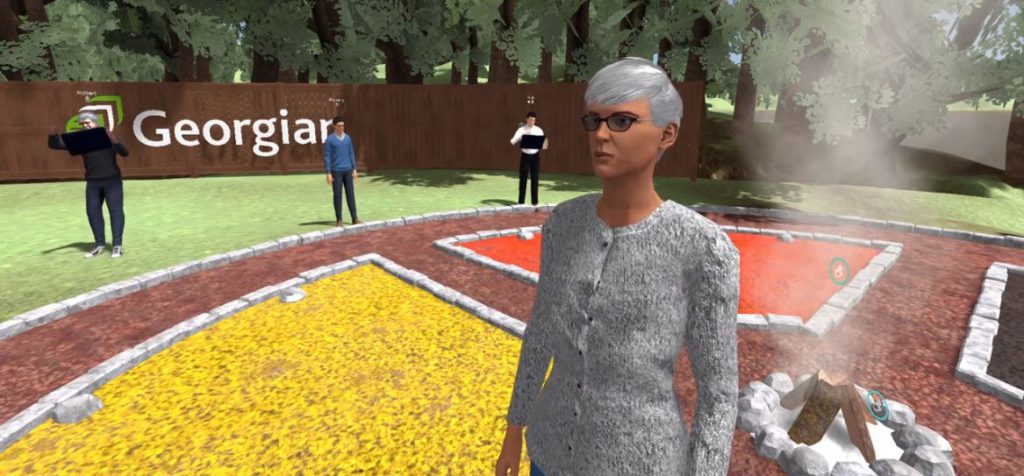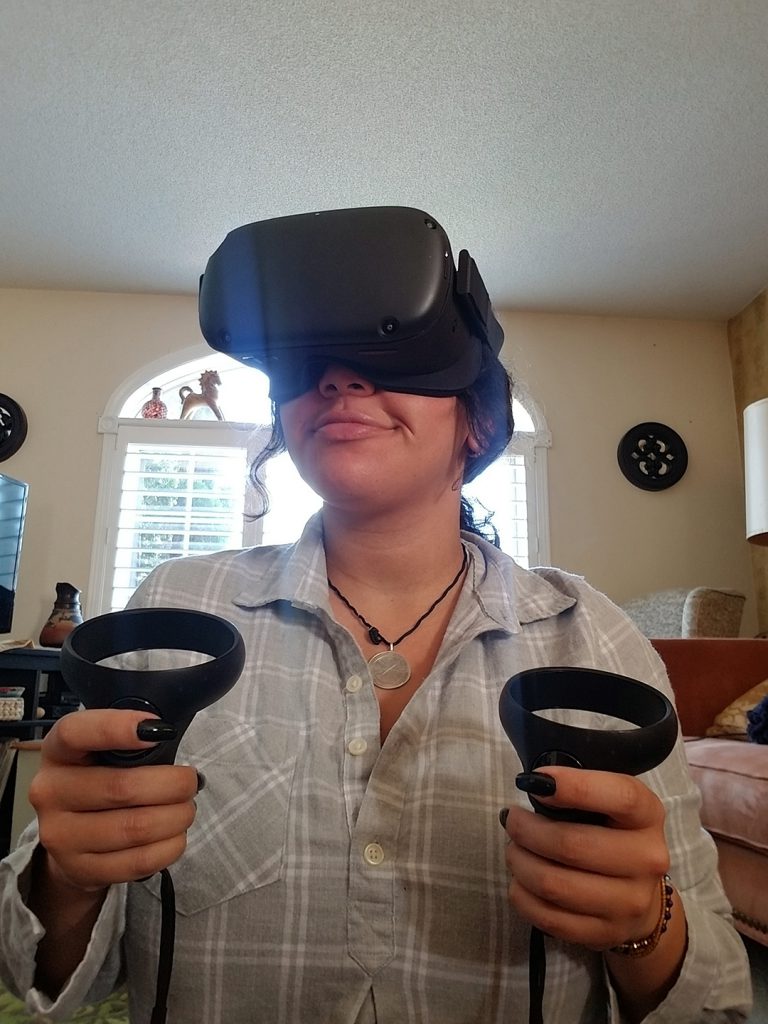Students learn Indigenous language using virtual reality
June 18, 2021
Georgian College is among a few schools in the world to offer Indigenous language education in an immersive virtual reality (VR) environment. This new technology is changing and enhancing the learning landscape for students and is part of the college’s bold new digital innovation strategy.
Rob Theriault, Georgian’s Immersive Technology Lead, worked with staff and faculty from Indigenous Studies to create an immersive Indigenous Language House that’s providing students in the Anishnaabemowin and Program Development program a unique and fun way to learn and practise their speaking skills.
The first module of language lessons is based around the home. Using AltspaceVR, Theriault built and furnished a house and put information buttons on all the items in the house. Faculty member Angeline King and Elder Ernestine Baldwin translated a word list for everything so that when a student clicks on a button, the Anishnaabemowin word pops up. There is also a second house using Engage software which includes voiceover translations with either Angeline, Ernestine or another faculty member Mitchell Ackerman giving the pronunciation.
Angeline says it was a big process to create the list as some words don’t exist in the language so they had to create words.
“We also wanted to stick with our own regional dialect,” says Angeline. “Ernestine and I went back and forth on them – we have a great sense of humour with our language.”
There is also a firepit and a basketball court outside the house where students can socialize virtually. This semester Angeline was able to teach students extra words around the sport of basketball – a whole lesson in itself – and it was one way to teach them language in an immersive and fun method.
A medicine wheel has also been incorporated as part of the house.

“We can teach students all about the wheel – what the colours mean, and all the teachings,” says Angeline. “They think they’re here just to learn the language but we also teach them about the culture.”
Maryam Ismail just completed her first year in the program and said the best thing about using the Indigenous Language House technology is that it brought all the students together.
“We feel closer to each other,” explains Maryam Ismail. “It’ll be weird to finally meet in real life and realize that we all don’t look like our avatars,” she laughs.
While she said there were a few challenges around internet connections, Maryam has enjoyed using the technology for her course and noted they’ve been learning while playing and exploring with their headsets and laptops. They’ve had fireside circle conversations where they can acquire many effective skills for learning the language.

“I definitely think the format has enhanced my learning,” says Maryam. “After COVID-19 I can’t wait to get back to the classroom but keeping VR would add so much to the program. I believe it should be part of the curriculum.”
Michele O’Brien, program co-ordinator for all Indigenous programming, was quick to see the potential benefits of VR technology.
“It’s allowed us to prepare for the next generation of learners – and this doesn’t necessarily mean direct from high school – it could mean students from a variety of ages,” says Michele. “The technology allows learners to see, feel and hear the meanings and translations of words.”
Michele adds that the best way to learn a new language is through socialization and when students are back to face-to-face learning it will be a good way for them to take what they learn in the classroom and practise skills on their own time.
Greg McGregor, Manager of Indigenous Services and Access Programs at Georgian, says the college recognized years ago that the Indigenous language – and those who are fluent in it – was slipping away.
“It was critical to create the Anishnaabemowin and Program Development program if we were going to save the language,” he says. “We’re the only college in Ontario currently offering a program in Anishnaabemowin and it’s important to remain a global leader in this area. We also know in order for the language to survive we need to engage the younger generation and this new technology is a perfect way to do this.”
Georgian is also sharing this new technology with other colleagues. All the virtual reality assets being built for language learning will be open source so they’re available to other Indigenous programs across Canada and around the world. In addition, Michele and Angeline were invited to participate on a panel during the iLRN World Conference on June 5. They presented on Revitalization and Preservation of Indigenous Languages and Culture using XR.
Interested in learning about other VR projects at Georgian? Read this story on other cool things we’re doing.